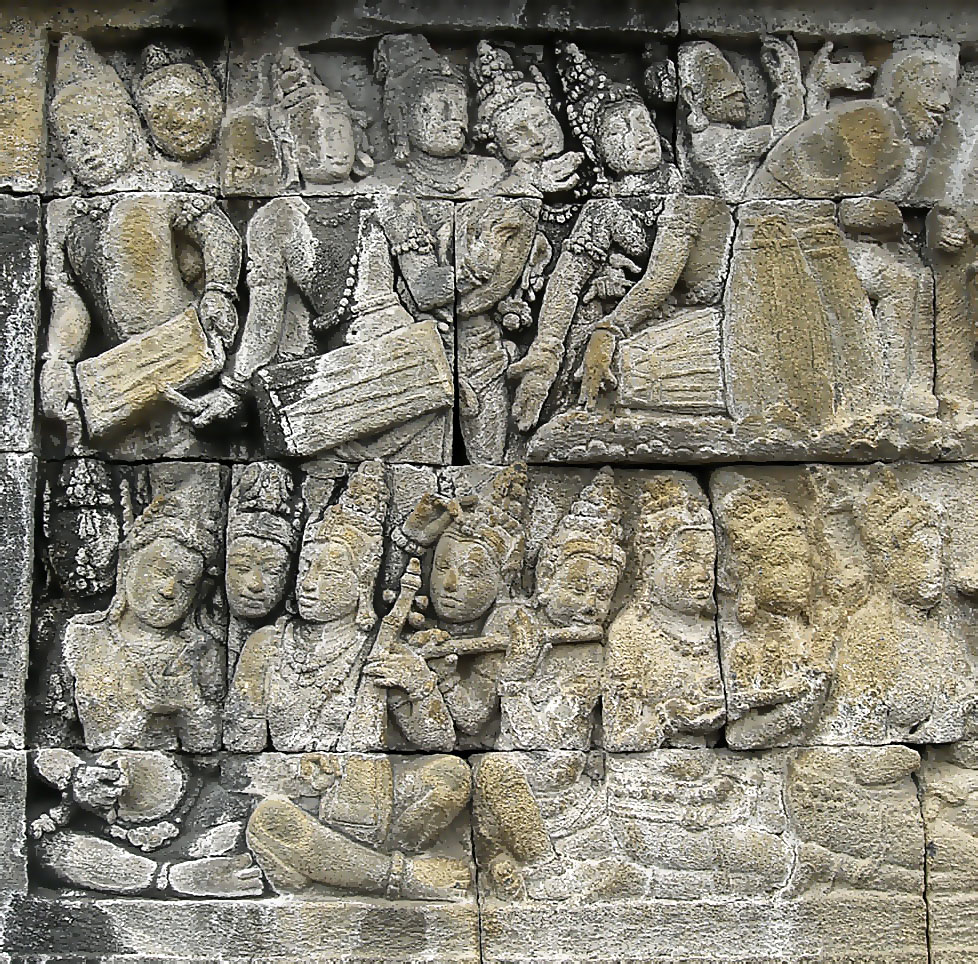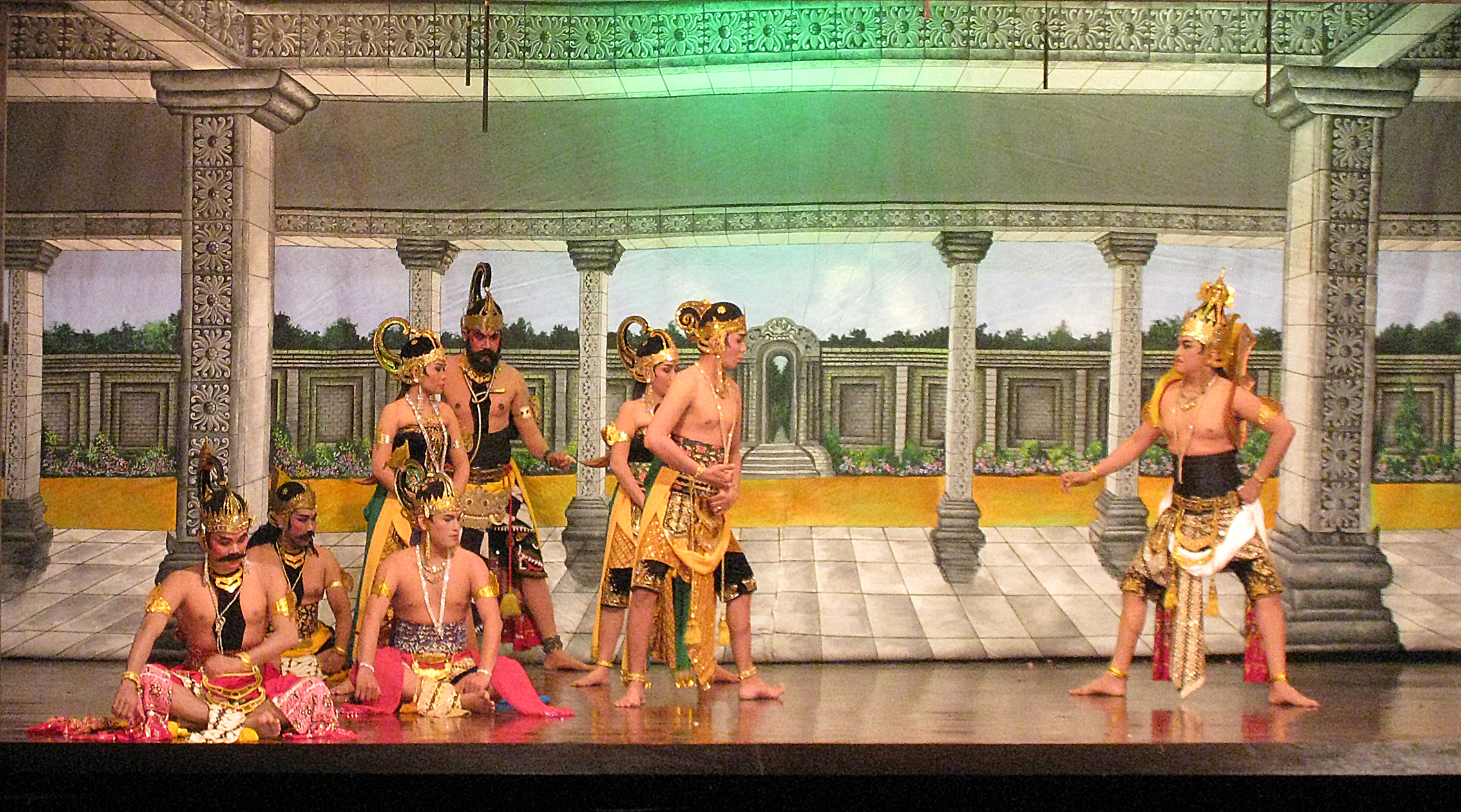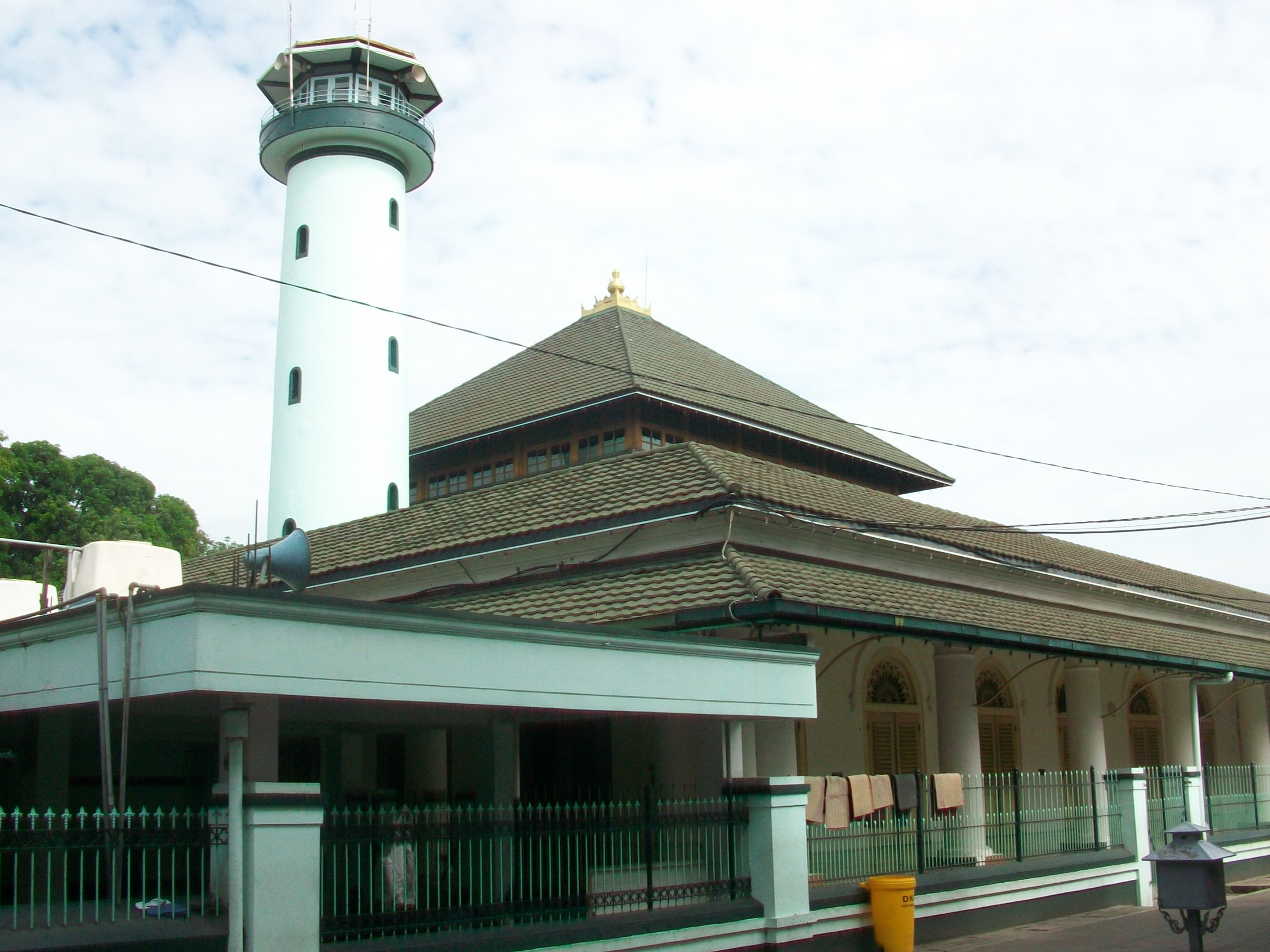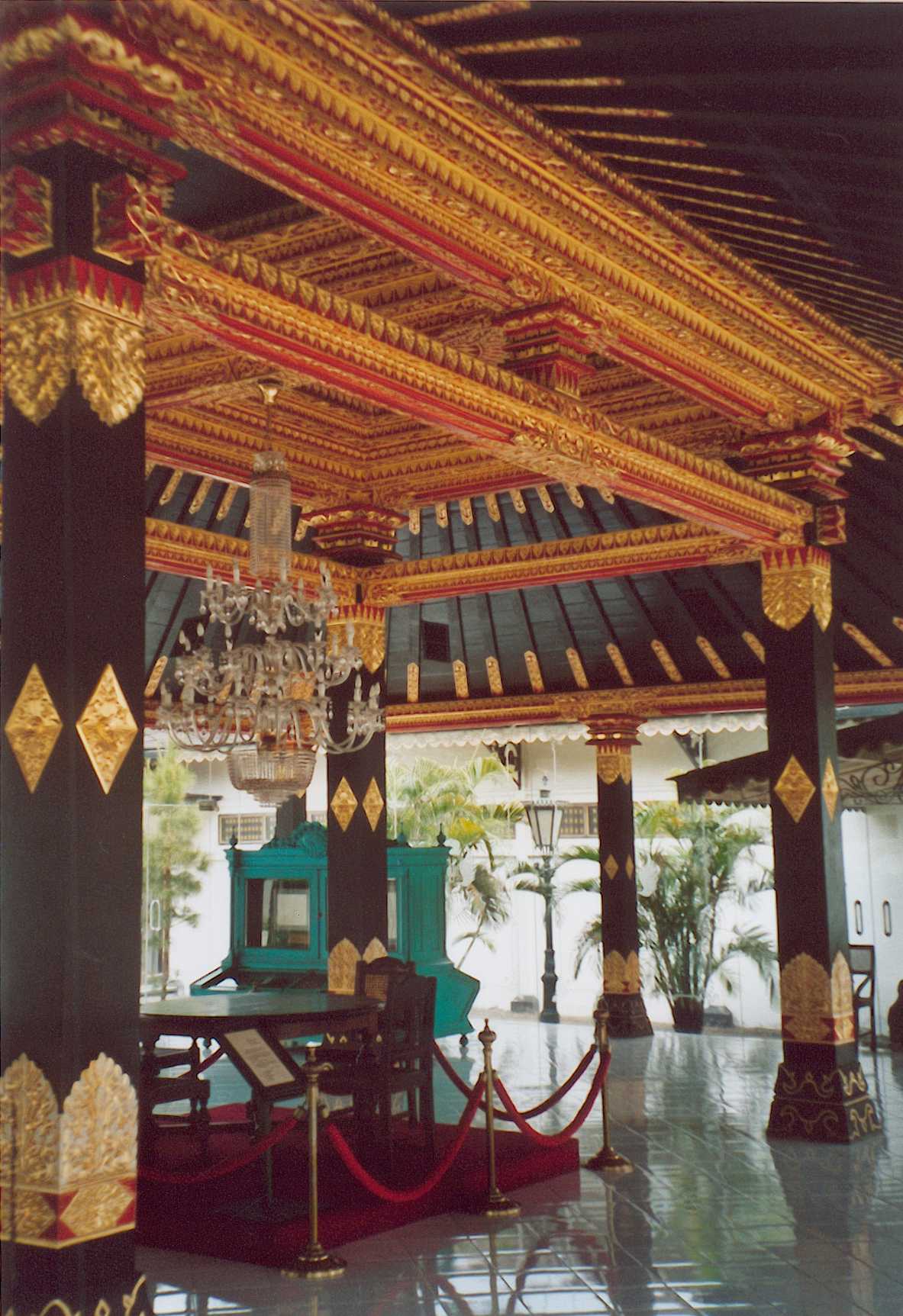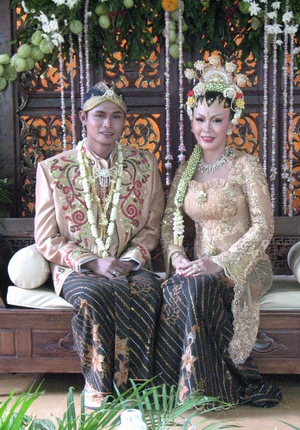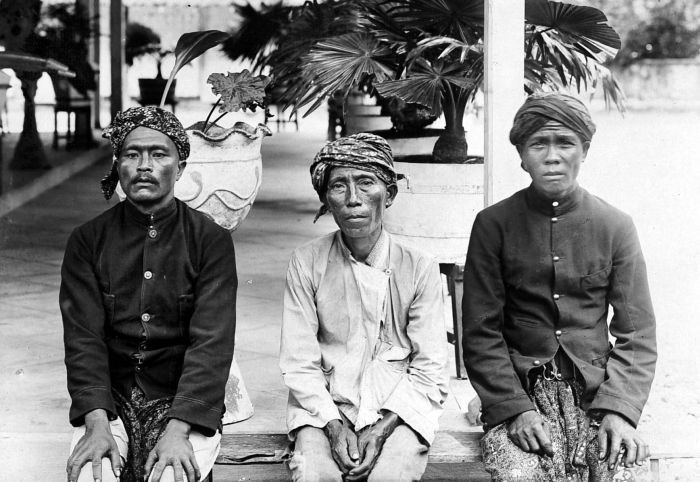|
Ludruk
''Ludruk'' is one of the theatrical genres in East Java. It is a form of traditional performance presented by a troupe of actors (or comedians) on a stage, re-telling the life stories of everyday people and their struggles. Its origin is unclear, but it is believed to be dated as far back as the 13th century. The dialogue or monologue in ''ludruk'' is mostly comedic. The actors would almost always use the Surabaya dialect of Javanese language, although sometimes there can be occasional guest stars from other areas, such as Jombang, Malang, Madura, and Madiun, each of whom would use their own dialect. Despite the fact that many different dialects are employed in one performance, as a whole, ''ludruk'' is a simple and straightforward comedy, making ludruk easily understood by everyone. It is occasionally interspersed with jokes and accompanied by gamelan to form a musical performance. A typical ''ludruk'' performance begins with a performance of ''Remo'' dance and followed by a ... [...More Info...] [...Related Items...] OR: [Wikipedia] [Google] [Baidu] |
Gamelan
Gamelan (; ; , ; ) is the traditional musical ensemble, ensemble music of the Javanese people, Javanese, Sundanese people, Sundanese, and Balinese people, Balinese peoples of Indonesia, made up predominantly of percussion instrument, percussive instruments. The most common instruments used are metallophones (played with mallets) and a set of hand-drums called ''kendang'', which keep the beat (music), beat. The ''kemanak'', a banana-shaped idiophone, and the ''gangsa'', another metallophone, are also commonly used gamelan Musical instrument, instruments on Bali. Other notable instruments include xylophones, bamboo flutes (similar to the Indian ''bansuri''), a bowed string instrument called a ''rebab'' (somewhat similar to the ''gadulka'' of Bulgaria), and a zither-like instrument called a ''siter'', used in Javanese gamelan. Additionally, vocalists may be featured, being referred to as ''sindhen'' for females or ''gerong'' for males.Sumarsam (1998)''Introduction to Javanese ... [...More Info...] [...Related Items...] OR: [Wikipedia] [Google] [Baidu] |
Theatre Of Indonesia
''Indonesian theatre'' is a type of Art of Indonesia, art in the form of drama performances that are staged on a stage, with a distinct Indonesian culture, Indonesian nuance or background. In general, theatre is an art that emphasizes the performing arts that are displayed in front of a large crowd. In other words, theater is a form of visualisation of a drama that is staged on the stage and watched by the audience. Indonesian theatre includes the performing arts of traditional theater and modern theatre located in the territory of Indonesia (also called Nusantara (archipelago), Nusantara). Some examples of Indonesian theater are Arja (drama), Arja, Wayang, Wayang wong, Lenong, Ludruk, Janger, Randai and others. Theatre in Indonesia can also be referred to as regional or ethnic theatre, because it originates and develops from 1,300 Ethnic groups in Indonesia, ethnic cultures in Indonesia. History Theatre performances in Indonesia have been going on for thousands of years. Most ... [...More Info...] [...Related Items...] OR: [Wikipedia] [Google] [Baidu] |
East Java
East Java (, , ) is a Provinces of Indonesia, province of Indonesia located in the easternmost third of Java island. It has a land border only with the province of Central Java to the west; the Java Sea and the Indian Ocean border its northern and southern coasts, respectively, while the narrow Bali Strait to the east separates Java from Bali by around . Located in eastern Java (island), Java, the province also includes the island of Madura Island, Madura (which is connected to Java by the longest bridge in Indonesia, the Suramadu Bridge), as well as the Kangean Islands, Kangean islands and other smaller island groups located further east (in the northern Bali Sea) and the Masalembu Islands, Masalembu archipelago to the north. Its capital is Surabaya, the Largest cities in Indonesia, second largest city in Indonesia, a major industrial center and also a major business center. Banyuwangi is the largest regency in East Java and the largest on the island of Java. The province cover ... [...More Info...] [...Related Items...] OR: [Wikipedia] [Google] [Baidu] |
Ketoprak
''Ketoprak'' () is a theatrical genre of Java featuring actors who may also sing to the accompaniment of the gamelan. It draws its stories from Javanese history and romances and in this differs from '' wayang wong'', which shares with ''wayang kulit'' a repertoire drawn from the Hindu epics Mahabharata and Ramayana, as well as from ''ludruk'' which uses contemporary settings and the three-walled '' srimulat'', which specializes in vampire stories. According to Clifford Geertz it was invented as recently as 1923. Ketoprak troupes might own or rent a performance building, such as Ketoprak Srimulat that used to be performed in a theatre both in Jakarta and Surabaya back in the 1980s, or troupes might travel through villages. The travelling ketoprak troupe is called ''Kethoprak Tobong'', also known as ''Ketoprak Tonil''. It might be considered as common people theatrical tradition in Java. The show were performed in certain period in an empty plain near a village and moved from one ... [...More Info...] [...Related Items...] OR: [Wikipedia] [Google] [Baidu] |
Traditional Drama And Theatre Of Indonesia
A tradition is a system of beliefs or behaviors (folk custom) passed down within a group of people or society with symbolic meaning or special significance with origins in the past. A component of cultural expressions and folklore, common examples include holidays or impractical but socially meaningful clothes (like court dress, lawyers' wigs or military officers' spurs), but the idea has also been applied to social norms and behaviors such as greetings, etc. Traditions can persist and evolve for thousands of years— the word ''tradition'' itself derives from the Latin word ''tradere'' literally meaning to transmit, to hand over, to give for safekeeping. While it is reportedly assumed that traditions have an ancient history, many traditions have been invented on purpose, whether it be political or cultural, over short periods of time. Various academic disciplines also use the word in a variety of ways. The phrase "according to tradition" or "by tradition" usually means that wh ... [...More Info...] [...Related Items...] OR: [Wikipedia] [Google] [Baidu] |
Javanese Culture
Javanese culture () is the culture of the Javanese people. Javanese culture is centered in the provinces of Central Java, Yogyakarta and East Java in Indonesia. Due to various migrations, it can also be found in other parts of the world, such as Suriname (where 15% of the population are of Javanese descent), the broader Indonesian archipelago region, Cape Malays, Cape Malay, Malaysia, Singapore, Netherlands and other countries. The migrants bring with them various aspects of Javanese cultures such as music, traditional dances and art of shadow play. The migration of Javanese people westward has created the Javanese culture in a small part of the northern coast that is distinct from the Sundanese people, Sundanese culture in the majority of West Java and Banten. Being the largest ethnic group, the Javanese culture and people influence Indonesian politics and culture, a process sometimes described as Javanisation. Literature Javanese literature tradition is among the earliest ... [...More Info...] [...Related Items...] OR: [Wikipedia] [Google] [Baidu] |
Wayang
( , ) is a traditional form of puppet theatre play originating from the Indonesian island of Java. The term refers both to the show as a whole and the puppet in particular. Performances of wayang puppet theatre are accompanied by a ''gamelan'' orchestra in Java, and by '' gender wayang'' in Bali. The dramatic stories depict mythologies, such as episodes from the Hindu epics the ''Ramayana'' and the ''Mahabharata'', as well as local adaptations of cultural legends. Traditionally, a is played out in a ritualized midnight-to-dawn show by a , an artist and spiritual leader; people watch the show from both sides of the screen. performances are still very popular among Indonesians, especially in the islands of Java and Bali. performances are usually held at certain rituals, certain ceremonies, certain events, and even tourist attractions. In ritual contexts, puppet shows are used for prayer rituals (held in temples in Bali), ritual (cleansing children from bad luck), and ri ... [...More Info...] [...Related Items...] OR: [Wikipedia] [Google] [Baidu] |
Javanese People
The Javanese ( , ; ) are an Austronesian peoples, Austronesian ethnic group native to the central and eastern part of the Indonesian island of Java. With more than 100 million people, Javanese people are the largest ethnic group in both Indonesia and in Southeast Asia as a whole. Their native language is Javanese language, Javanese, it is the largest of the Austronesian languages in List of languages by number of native speakers, number of native speakers and also the largest regional language in Southeast Asia. As the largest ethnic group in the region, the Javanese have historically dominated the social, political, and cultural landscape of both Indonesia and Southeast Asia. There are significant numbers of Javanese diaspora outside of Central Java, central and East Java, eastern Java regions, including the other provinces of Indonesia, as well as other countries such as Suriname, Singapore, Malaysia, Egypt, Saudi Arabia, South Africa, Sri Lanka, Yemen and the Netherlands. ... [...More Info...] [...Related Items...] OR: [Wikipedia] [Google] [Baidu] |
Central Java
Central Java (, ) is a Provinces of Indonesia, province of Indonesia, located in the middle of the island of Java. Its administrative capital is Semarang. It is bordered by West Java in the west, the Indian Ocean and the Special Region of Yogyakarta in the south, East Java in the east, and the Java Sea in the north. It has a total area of 33,750.37 km2, with a population of 36,516,035 at the 2020 CensusBadan Pusat Statistik, Jakarta, 2021. making it the third-most populous province in both Java and Indonesia after West Java and East Java. The official population estimate in mid-2024 was 37,892,280 (comprising 19,037,740 males and 18,854,540 females).Badan Pusat Statistik, Jakarta, 28 February 2024, ''Provinsi Jawa Tengah Dalam Angka 2024'' (Katalog-BPS 1102001.33) The province also includes a number of offshore islands, including the island of Nusa Kambangan, Nusakambangan in the south (close to the border of West Java), and the Karimunjawa, Karimun Jawa Islands in the Java ... [...More Info...] [...Related Items...] OR: [Wikipedia] [Google] [Baidu] |
Madurese People
Madurese people ('' mUH-dOO-rUH''; ; ) are one of the Austronesian-speaking ethnic group native to the Indonesian island of Madura in the Java Sea, off the northeastern coast of Java. They speak their own native Madurese (with diverse varieties), sharing a common history, traditions, and cultural identity. Nationwide, the Madurese are the third-largest ethnic group in Indonesia, and one of the well-known Indonesian national dishes, Satay, is attributed to the Madurese as part of their culinary heritage. About six million native Madurese are living on their ancestral land, Madura Island, and around half a million reside in eastern Java, mainly in the regencies of Jember, Banyuwangi, and others. The Madurese population in Java forms a subgroup called the Pandalungan Madurese, who speak a blend of Javanese and Madurese. The Madurese are not only known as the inventors of satay but also as the creators of the Karapan sapi bull race. The group have historically been pioneers of ... [...More Info...] [...Related Items...] OR: [Wikipedia] [Google] [Baidu] |
Dialect
A dialect is a Variety (linguistics), variety of language spoken by a particular group of people. This may include dominant and standard language, standardized varieties as well as Vernacular language, vernacular, unwritten, or non-standardized varieties, such as those used in developing countries or isolated areas. The non-standard dialects of a language with a writing system will operate at different degrees of distance from the standardized written form. Standard and nonstandard dialects A ''standard dialect'', also known as a "standardized language", is supported by institutions. Such institutional support may include any or all of the following: government recognition or designation; formal presentation in schooling as the "correct" form of a language; informal monitoring of everyday Usage (language), usage; published grammars, dictionaries, and textbooks that set forth a normative spoken and written form; and an extensive formal literature (be it prose, poetry, non-ficti ... [...More Info...] [...Related Items...] OR: [Wikipedia] [Google] [Baidu] |
